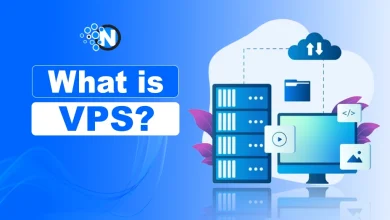What Make Software Project Management Different?

The software development project lifecycle is an intricate one, requiring knowledge and skillsets that extend beyond those necessary for several other types of projects. While any project is complex, managers need to understand the demands of a technology initiative. Project management is complex in any scenario, no matter what the industry: construction, media, finance, healthcare, and marketing, to name just a few. Software is one of those fields, and as one of the most lucrative and relevant products and services on the market today, it is, in many ways, a whole different game.
What Sets Software Project Management Apart?
While all the project management skills you need for other industries still apply — problem-solving, communication, organization, financial acumen, and so on — in the software field, it’s also necessary to understand the ins and outs of the technology projects you spearhead. Another clear distinction is the software project lifecycle, which differs from other types of initiatives in a number of ways.
The software development lifecycle begins with requirements gathering, before moving into the development phase, and then undergoing several rounds of testing. These stages are all repeated, and the product itself is never fully finished — providers will continue to update it and deliver new releases.
It also demands a specific methodology. While there are several project methodologies to choose from, today, the majority of software development teams embrace Agile and its various iterations and modifications. This approach, governed by a set of 12 principles called the Agile Manifesto, demands constant improvement and the delivery of feedback from clients. That means that stakeholders are involved in the project management process at every stage.
But this, in some ways, is a double-edged sword. Software is an industry where the stakeholders often are not technology professionals themselves. Therefore, they’re not always aware of what is required to turn out an optimal result. This lack of knowledge can lead to problems like scope creep when changes in requirements during the project expand the scope of the project in terms of factors like budget and timelines. It can also mean that the development team will need to redo extensive amounts of work.
Clients may not understand the limitations of the team and the tools involved. That’s why as part of the project management process, it’s critical to manage expectations.
Finally, software project management is characterized by uncertainty. This is not a one-size-fits-all situation. From the methodology you choose to the tools you employ to the team you lead, things don’t always work out the way you anticipate.
There is no tangible end result that non-technologically-minded clients can examine. It’s all about code. They won’t be able to inspect the code — it’s not something they can physically hold in their hands. This can make it difficult to know when a project is truly complete and meets the requirements and client expectations.
What Role Does The Project Manager Play?
In any project, the project manager plays a critical role. Often using project management software and tools, they establish a budget, choose the team members, organize the workflow, establish a timeline, develop a plan for communication, anticipate the scope, delegate resources, create a strategy, and keep everyone on task.
But the project manager’s role in software development demands several additional steps and qualities. For example, in the early stages, the project manager acts as a liaison between the development team and the clients and stakeholders. They must be able to translate technical requirements and factors into laypeople’s terms so that everyone understands the expectations. This is one reason why a software project manager must have some technical knowledge, even if the job itself is not a technical one.
The project manager must also be able to anticipate the many challenges that can arise during the software development lifecycles and develop plans for protecting their team and project, along with coming up with plans to address them.
Moreover, the project manager also leads a comprehensive testing and quality assurance (QA) strategy. Working closely with the developers and QA specialists, they will need to lay out a plan for the assessment and frequent testing of products in multiple stages. They must also have objectives in place for new releases and fixing defects down the line, even after the product’s initial release.
Tips And Tricks For Success
• Define roles for each team member.
A team member’s title doesn’t necessarily dictate each and every responsibility they are expected to perform. Different projects demand different tasks and skills.
It’s the project manager’s job to delegate responsibilities accordingly, based on the needs of the specific initiative. This includes both technical and non-technical aspects of the project, from the development to the design to the testing to the implementation.
Additionally, the project manager needs to recognize when one individual has too much on their plate at a given time. It’s critical to understand the scope not only of each project but each individual task and delegate accordingly.
• Manage stakeholder expectations
When stakeholders aren’t technological experts themselves, they can very well have ideas that exceed what’s feasible. As the team and client liaison, the project manager must temper expectations, communicating what’s within the realm of possibility.
This begins with requirements gathering and persists throughout the project lifecycle, from guarding against scope creep to implementing a comprehensive testing plan.
• Have a risk management plan in place
Risks are inherent to any project, no matter what the industry. In software development, they are particularly intrinsic to the very nature of the industry. The project manager’s job is to identify the risks at the beginning of the process and consider how they will after various aspects of the software development lifecycle.
They must also have a plan for addressing these risks, should they come to fruition during the course of the project.
• Always have the end-user in mind
The core purpose of your software project is to meet the needs of your users. Each team member must remember this at every point. You’re creating this product for them, so they need to be at top of their minds. Everything you do toward this must be in service of this goal. You should, therefore, seek to understand the user, developing personas and accounting for their interests and desires.
As much as is feasible, it’s critical to stick to this plan. Of course, you may need to deviate at certain points — this is par for the course. Contingency plans, therefore, are also an essential part of the process.
Ultimately, a software project demands the right skillsets, a comprehensive strategy, and the best tools. With these elements in place, you’re clearing the path to success.




